There are a wide variety of industrial and household uses for heat exchangers. They're essential for keeping everything running smoothly and efficiently, from controlling heat flow to conserving energy. Heat can be transmitted between fluids directly, as in a liquid-to-liquid heat exchanger, or through a solid separator that prevents the fluids from mixing, as in a gas-to-gas heat exchanger. The construction materials, parts, heat transfer mechanisms, and flow patterns of various types of heat exchangers can all be further dissected. These heat-exchanging devices are widely used in numerous industries and are produced in a wide range of designs for use in both heating and cooling activities.
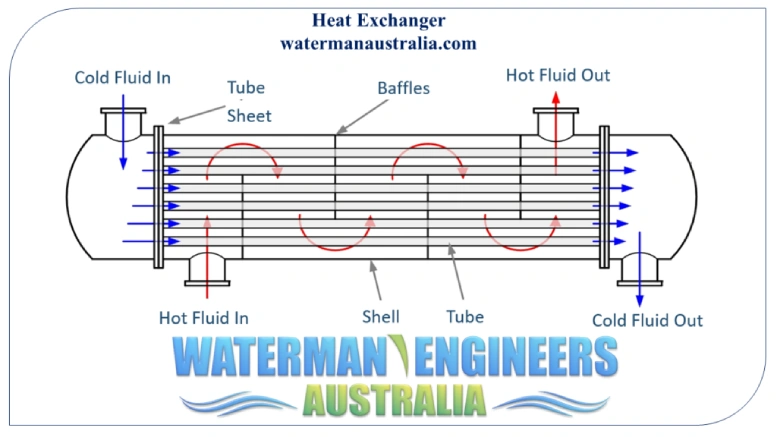
A heat exchanger is a device that allows for the transmission of heat between two different media without any physical contact between them. Heat exchangers work on the idea that thermal energy can be transferred from a hot fluid to a cold fluid. Heat exchangers provide for precise temperature regulation, improving energy efficiency and system functionality by transferring heat between two fluids.
Power plants, chemical plants, HVAC (heating, ventilation, and air conditioning) systems, supermarkets, and many more all employ heat exchangers. They can be found in commonplace home products like air conditioners and water heaters.
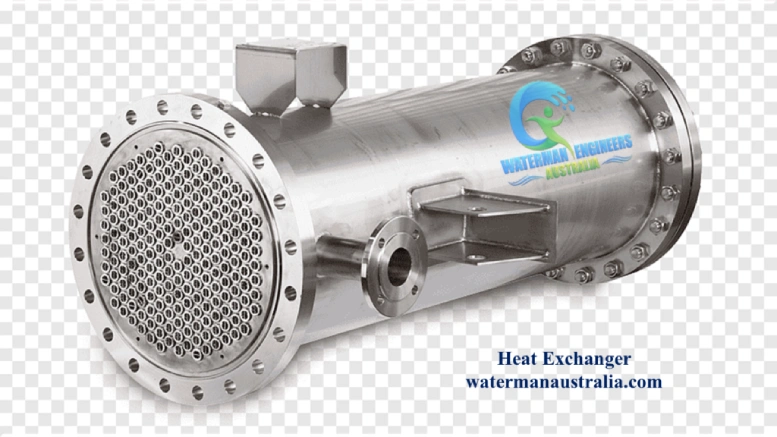
Heat Exchanger Thermodynamics
Building a heat exchanger involves applying thermodynamics, the study of heat energy flow, temperature, and their links to other forms of energy. The easiest way to understand heat exchanger thermodynamics is to first become familiar with the three basic mechanisms of heat transport.
- Conduction
- Convection
- Radiation
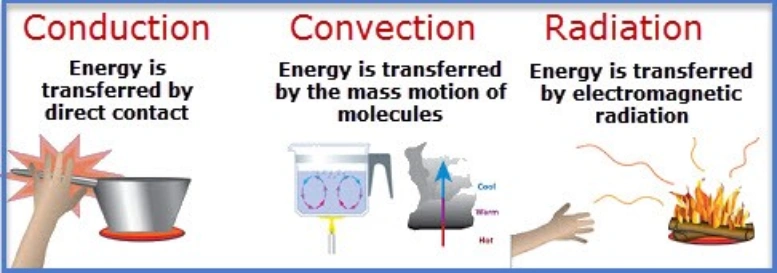
Basic Principles of Heat Exchangers
All heat exchangers, regardless of size, shape, or design, follow the same basic principles.
- Thermodynamics' Zeroth Laws
- First Thermodynamic Laws
- Second Thermodynamic Laws
which explain and regulate the process by which heat is "exchanged" between different fluids.
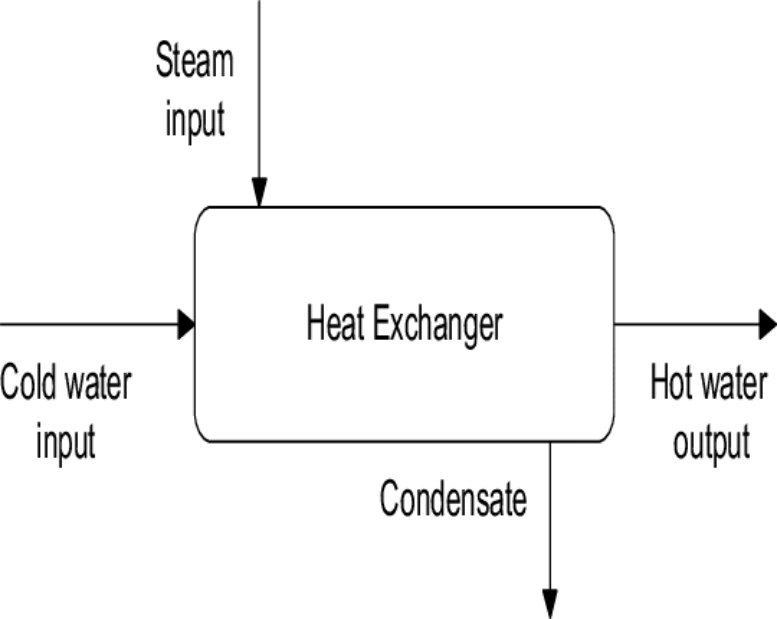
The temperature of any thermodynamically equilibrium condition is the same, according to the Zeroth Law of Thermodynamics. Since two systems must likewise be in thermal equilibrium with one another if they are in thermal equilibrium with a third, all three systems are at the same temperature.
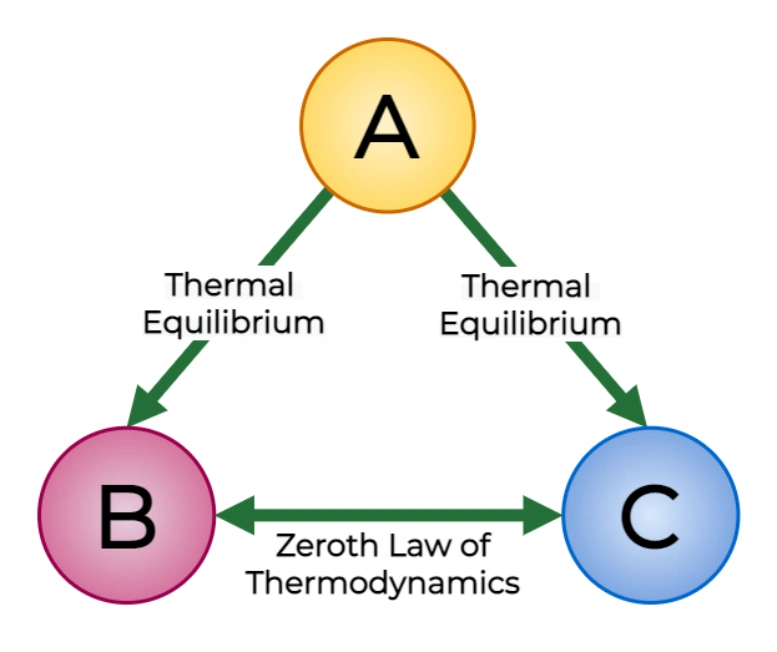
By presenting the idea of internal energy (U) as a second feature of thermodynamic systems and demonstrating how both heat and work can impact the overall energy of a particular system and its surroundings, the First Law of Thermodynamics builds upon the Zeroth Law. In addition, the first law also referred to as the Law of Conversion of Energy states that energy can only be transferred to another thermodynamic system or transformed into an other form; it cannot be created or destroyed.
For instance, if external heat is absorbed by the system, the system's internal energy will rise while the energy of its environment would fall. The following equation illustrates this principle, where system internal energy (U system) and environmental internal energy (U environment) are given:

The Second Law of Thermodynamics states that the universe, like every other closed thermodynamic system, has an innate and constant tendency to increase in entropy over time. This concept is demonstrated by the following equation, where S is the change in entropy, Q denotes the change in heat contributed to the system, and T is the absolute temperature:
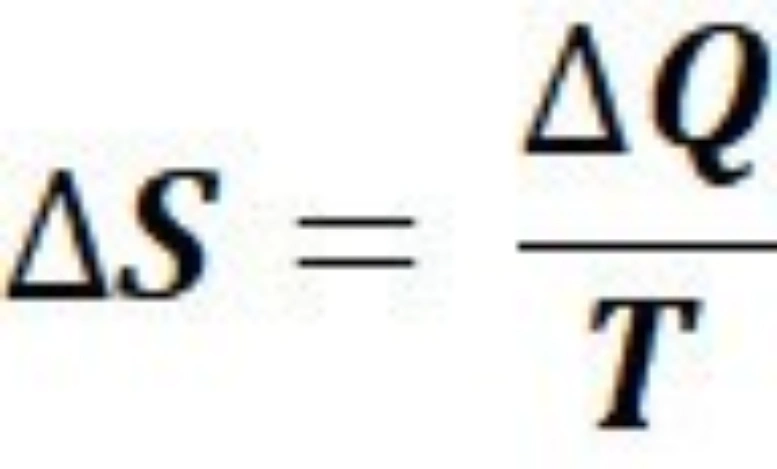
The First Law explains the inverse relationship between a system's internal energy (and its converted forms) and that of its surrounding environment, the Second Law expresses the tendency for two interacting systems to move towards thermal equilibrium, and the Zeroth Law defines temperature as a measurable property of thermodynamic systems. The fundamental workings and principles of heat exchangers are determined by these rules taken together.
Heat is thereby transferred from the fluid with the higher temperature to the fluid with the lower temperature through the interaction of the two fluids, which is how heat exchanger’s function. Temperatures at lower levels will rise and those at higher levels will fall as a result of this heat transfer. This technique (as well as the devices that use it) can be applied to either dissipate heat from a system to cool it down or absorb heat into a system to heat a fluid.
Uses of Heat Exchangers
Heat exchangers are essential components in many different applications. Principal uses consist of:
1.Temperature Control
The primary purpose of heat exchangers is temperature regulation. Depending on the requirements of the system or operation, the fluid they are employed on might be heated or chilled. For example, heat exchangers are utilised in HVAC systems to control air temperature and maintain a comfortable interior environment.
2. Energy Recovery:
Heat exchangers are often utilised to stop thermal energy from being wasted. The overall energy efficiency of industrial operations can be significantly increased by the transfer of waste heat from one system to another.
3. Heat Generation
Heat exchangers, which are used in power plants and boilers to produce heat and electricity, transport heat from hot combustion gases to water to produce high-pressure steam.
4. Cooling:
Heat exchangers are widely used in various contexts to accomplish cooling. In order to prevent servers and other equipment from overheating, they cool the air in data centres and the engine coolant in automobiles.
5. Heat Recovery:
Waste heat from combustion processes can be collected and redirected into warm water, structures, or other uses with the use of a heat exchanger. This is a widely used function in water heaters for homes and businesses.
6. Refrigeration
Refrigeration systems use heat exchangers to cool the refrigerant, which in turn cools the interior of the appliance it is used in.
Various Types of Heat Exchangers
Heat exchangers available in a variety of designs, each with its own set of benefits. Application, fluid characteristics, and desired heat transfer efficiency are only a few considerations when deciding which type of heat exchanger to use.
1. Shell and Tube Heat Exchangers
Heat exchangers that use a shell and tube design have a cylindrical shell with tubes inside. Both fluids move, one through the tubes themselves (the tube-side fluid) and one outside of them (the tube-side fluid) (the shell-side fluid). As a result of their durability and superior heat transfer efficiency, they find widespread application across a number of different industries. High-pressure and high-temperature environments are tailor-made for shell and tube heat exchangers.
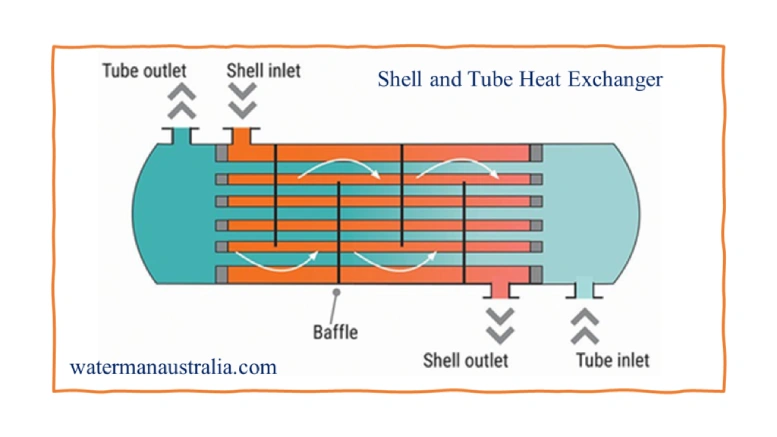
2. Plate Heat Exchangers
The plates in a plate heat exchanger are relatively thin and corrugated, and there are many of them. A network of channels is formed between the plates allowing the hot and cold fluids to move through. Plate heat exchangers have great heat transfer capabilities, are inexpensive, and take up little space. They have many uses in the industrial sector, including HVAC systems.
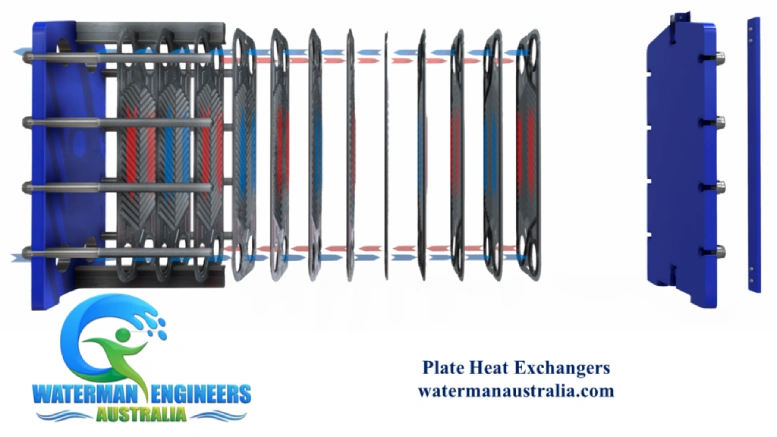
3. Finned Tube Heat Exchangers
Fins are affixed to the exterior of the tubes in finned tube heat exchangers in order to enhance heat transfer. These fins boost the heat exchange efficiency by increasing the heat transfer area. Finned tube heat exchangers are commonplace in refrigeration systems and are widely employed in air-cooling applications.
4. Double-Pipe Heat Exchangers
Heat exchangers with two concentric pipes are small, simple, and efficient. The annular gap between the two pipes is used to direct the flow of a second fluid, which is carried by the inner pipe. They work well for water-to-water heating and cooling, as well as other applications that require low to moderate temperatures.
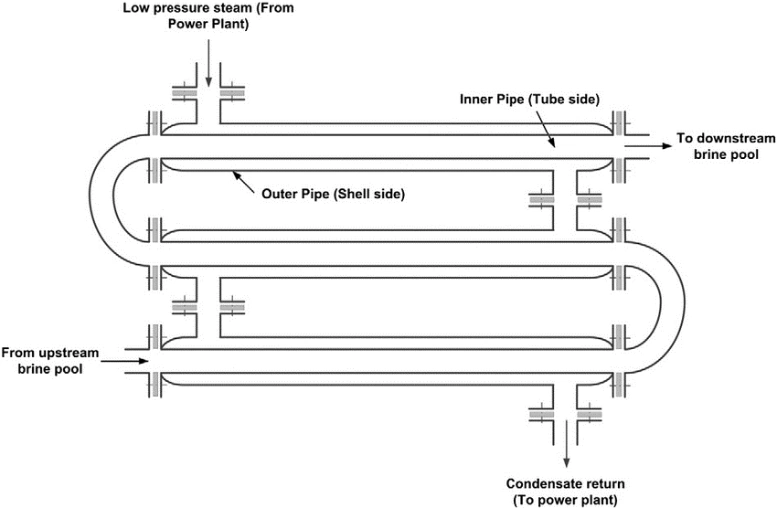
5. Plate-Fin Heat Exchangers
Plate-fin heat exchangers have multiple layers of fins sandwiched between plates. These heat exchangers excel in situations where space and weight constraints are of the utmost importance. Common applications for plate-fin heat exchangers include those involving aviation, cryogenics, and automobiles.
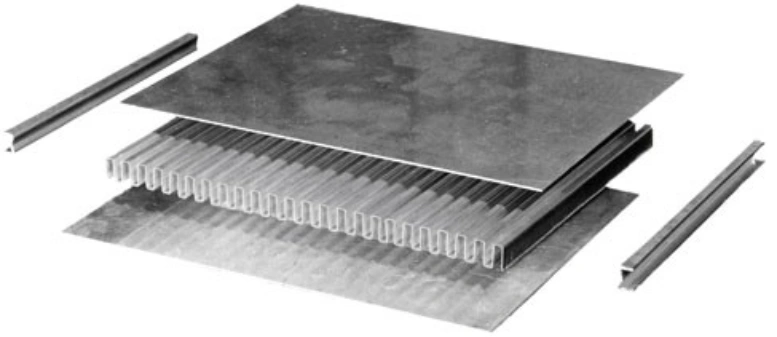
6. Air-to-Air Heat Exchangers (Heat Recovery Ventilators)
Air-to-air heat exchangers, sometimes referred to as energy recovery ventilators or heat recovery ventilators (HRVs), have several advantages for buildings (ERVs). They redistribute heat between the indoor and outdoor air streams while retaining independent airflows. The use of HRVs and ERVs in HVAC systems has been shown to increase comfort while decreasing energy costs.
7. Regenerative Heat Exchangers
When working with temperatures in the thousands of degrees Fahrenheit, a regenerative heat exchanger is the only option. They transfer and store heat via a matrix that spins or moves. These exchangers are ubiquitous in manufacturing and may function in harsh environments.
Designing a Heat Exchanger
We need this info in order to choose the best heat exchanger.
- Fluid, temperature, and velocity of the primary circuit (usually the hot fluid)
- The subsystem needs to be separated from the main circuit (Heat dissipation or a target outlet temperature)
- Possible influences on the fluid in the secondary circuit include: (usually the coolant)
Which fluids are suitable for use in a heat exchanger?
The materials available and the design of the heat exchanger determine whether or not a particular fluid is compatible with it. Waterman Engineers Australia's heat exchangers are compatible with a large range of fluids. Materials like Stainless Steel and Titanium are better suited for usage with less corrosive fluids however, they cannot be utilised with chlorinated salt water, refrigerants, or acids.
How can I calculate the number of heat exchanger “passes” require?
A “pass” is the movement of fluid from one area of a heat exchanger to another. One example of this is the circuit “through tubes” (usually the coolant).
- Single Pass Fluid enters the heat exchanger at one end and leaves at the other.
- The double-pass fluid uses both the heat exchanger’s entrance and output.
- Before being released, the fluid is moved through the heat exchanger body three times.

Although more passes increase the available heat transfer capacity, they can also result in high velocity and considerable pressure loss. With a full set of operational data, engineers in Australia can select the most efficient heat exchanger within the parameters of permitted pressure loss and velocity. By altering the quantity and pitch of the baffle, the primary circuit's number of passes can be changed to enhance thermal performance and efficiency.
How to make a heat exchanger more efficient?
Although there is no single agreed-upon definition of heat exchanger efficiency, several critical parameters must be taken into account to ensure optimal thermal performance.
Difference in temperature
It is imperative to consider the temperature differential between the coolant and the hot fluid when designing a heat exchanger. There must always be a temperature differential between the hot fluid and the coolant. At reduced coolant temperatures, there will be a larger transfer of heat from the heated fluid to the cooler coolant. As with heat exchangers, it is more effective to use ice rather than just cool water to chill a glass of room temperature drinking water.
Flow rate
Additionally crucial are the fluid fluxes on the heat exchanger's primary and secondary sides. The heat exchanger's efficiency will increase with a higher flow rate, but this will also add bulk to the system, increasing resistance to energy removal and the resulting pressure and velocity loss.
Installation
It is always recommended by Waterman Engineers Australia that the heat exchanger be fitted in compliance with their requirements. For shell and tube heat exchangers, coolant should enter at the lowest inlet position (as indicated in the above figures) to guarantee that the heat exchanger is always full of water. This is due to the fact that installing a heat exchanger with the fluids flowing in a counter-current arrangement is the most efficient method (so if the coolant is travelling left to right, the hot fluid travels right to left). The cooler's capacity to chill air that travels through the heat exchanger is diminished by any restriction to airflow through the cooler's core.
How to increase the lifetime of a Heat Exchanger
Heat exchangers should not have any problems lasting for many years if used appropriately because they are composed of sturdy materials, have no moving parts, and can operate at a variety of pressures and temperatures. A heat exchanger's operational lifespan can be increased by taking a few steps.
Make sure the design data is accurate.
It's crucial to make sure the information you give our waterman engineers is as precise as possible when choosing a heat exchanger. This precaution will ensure the long-term operational longevity of your heat exchanger in addition to its thermal efficiency. Kindly contact us to verify compatibility. If the fluids contain any special components (such acids in cooling water), excessive flow rates could cause erosion, and excessive pressure could lead to leaks. If any of our standard materials are inappropriate, we can usually provide something comparable.
Commission and Installation
Ensure that the appropriate fittings and piping are used when installing your heat exchanger. If you have any questions, please see Waterman Engineers Australia's Installation and Operation Manual for further details. Before employing heat exchangers in circumstances where the coolant is filthy, shallow, or brackish sea water, it is recommended to operate them in clean sea water for a few weeks. This helps to form a protective coating over the copper alloy tubes, which helps to prevent corrosion. You may find more details about this topic at watermanaustralia.com. In order to stop tube erosion, filters should be employed whenever possible in fluids that can include solid particles.
Regular Maintenance and Servicing
All Australian-made Shell and tube heat exchangers manufactured by Waterman Engineers are designed to be readily maintained and serviced. By removing the end caps, the internal tube bundle can be removed to make cleaning easier.
When choosing the best heat exchanger for a task, it is essential to comprehend the many kinds of heat exchangers and their distinctive characteristics. Heat exchangers will become more and more important as technology develops in our attempts to control and maximize heat transfer processes while reducing energy use and environmental effect.

